
A sawshark or saw shark is a member of a shark order bearing a unique long, saw-like rostrum edged with sharp teeth, which they use to slash and disable their prey. There are eight species within the Pristiophoriformes, including the longnose or common sawshark, shortnose sawshark, Japanese sawshark, Bahamas sawshark, sixgill sawshark, African dwarf sawshark, Lana's sawshark and the tropical sawshark.

Carpet sharks are sharks classified in the order Orectolobiformes. Sometimes the common name "carpet shark" is used interchangeably with "wobbegong", which is the common name of sharks in the family Orectolobidae. Carpet sharks have five gill slits, two spineless dorsal fins, and a small mouth that does not extend past the eyes. Many species have barbels.

Rajiformes is one of the four orders in the superorder Batoidea, flattened cartilaginous fishes related to sharks. Rajiforms are distinguished by the presence of greatly enlarged pectoral fins, which reach as far forward as the sides of the head, with a generally flattened body. The undulatory pectoral fin motion diagnostic to this taxon is known as rajiform locomotion. The eyes and spiracles are located on the upper surface of the head and the gill slits are on the underside of the body. Most species give birth to live young, although some lay eggs enclosed in a horny capsule.
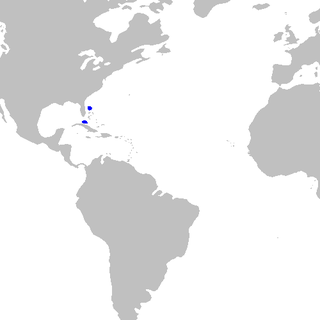
The Bahamas sawshark, Pristiophorus schroederi, is a sawshark of the family Pristiophoridae, found in the western Central Atlantic Ocean from the Bahamas and Cuba at depths of between 400 and 1,000 m. These sharks are at least 80 cm long.
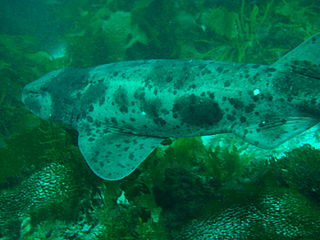
Cephaloscyllium is a genus of catsharks, and part of the family Scyliorhinidae, commonly known as swellsharks because of their ability to inflate their bodies with water or air as a defense against predators. These sluggish, bottom-dwelling sharks are found widely in the tropical and temperate coastal waters of the Indian and Pacific Oceans. They have stocky, spindle-shaped bodies and short, broad, and flattened heads. The mouth is capacious, containing many small teeth and lacking furrows at the corners. The two dorsal fins are placed far back on the body, with the first much larger than the second. Different species have various color patterns of saddles, blotches, reticulations, and/or spots. The largest members of the genus can grow over 1 m (3.3 ft) in length. Swellsharks prey on a variety of fishes and invertebrates, and are oviparous, with females producing egg capsules in pairs. They are harmless and have been deemed of having no commercial value.

The shortnose sawshark, or southern sawshark, is a sawshark of the family Pristiophoridae. The body of this shark is slightly compressed, and its rostrum is narrow. The two dorsal fins are almost identical in size. In color, the dorsal side of this sawshark tends to be uniformly slate gray, with few or no markings. The ventral side is pale white or cream. Females reach around 124 cm (49 in) long, and males reach around 110 cm (43 in) long. These sharks can live up to 9 years.
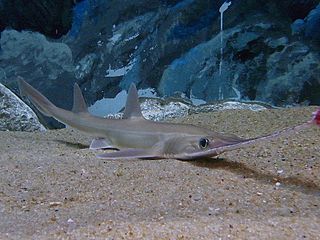
The Japanese sawshark is a species of sawshark in the family Pristiophoridae. This shark has a long, narrow rostrum. Its first dorsal fin originates behind the tips of the pectoral fins, and its caudal fin is angled almost straight in line with the body. The Japanese sawshark reaches a maximum length of up to 1.36 m.

The sixgill sawshark, Pliotrema warreni is a sawshark of the family Pristiophoridae. Presence of 6 pairs of gill slits highlights this genus among sharks; outside Hexanchiformes order, Pliotrema is the only shark with more than 5 gill slits. Unlike other sawsharks, the barbs on this shark's rostrum continue onto the sides of the head. Its barbels are also closer to its mouth than in other species. At maximum, females can reach over 136 cm long, and males can reach over 112 cm long.
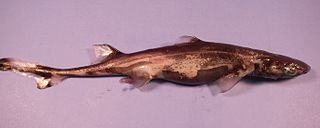
Etmopterus is a genus of lantern sharks in the squaliform family Etmopteridae. They are found in deep sea ecosystems of the Atlantic, Indian and Pacific Oceans.
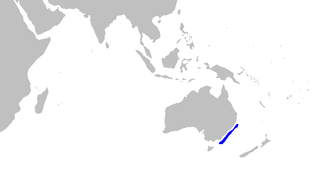
The Eastern Australian sawshark, Pristiophorus peroniensis, is a sawshark of the family Pristiophoridae, found off southeastern mainland Australia at depths of between 100 and 630 m. Its length is up to 1.36 m.

Dipturus is a large genus of skates native to the Pacific, Atlantic, and Indian Oceans. They were formerly included in Raja. Some species initially moved to Dipturus were later placed in Dentiraja, Spiniraja, and Zearaja.

Rhynchobatus is a group of rays commonly known as wedgefishes in the family Rhinidae. They are found in the tropical and subtropical Indo-Pacific with a single species in the eastern Atlantic. All species in this genus are assessed as Vulnerable or Endangered by IUCN.

Chimaera is the type genus of the cartilaginous fish family Chimaeridae.
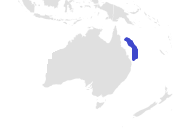
The tropical sawshark, Pristiophorus delicatus, is a recently described species of sawshark, family Pristiophoridae, formerly known in literature as Pristiophorus sp. B. It is endemic to northeastern Australia, found on the upper continental slope off Queensland from south of the Samaurez Reef, at a depth of 246–405 meters (807–1,329 ft). Its specific epithet delicatus is Latin for "delicate", referring to the fine teeth on its saw-like rostrum.
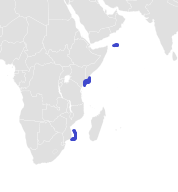
Pristiophorus nancyae, the African dwarf sawshark or dwarf sawshark, is a sawshark of the family Pristiophoridae. The species was discovered in 2011 when a specimen was caught off the coast of Mozambique at a depth of 1,600 ft (490 m).

The southern dogfish is a species of shark in the family Centrophoridae. It was described in 2008 along with the western gulper shark, and belongs to genus Centrophorus. It is mainly found in the Indian and Pacific ocean, but they are distributed in other oceans as well. As a result, it is one of the more recent and elusive types of shark to date.

Lana's sawshark or the Philippine sawshark, is a sawshark of the family Pristiophoridae, found in the Philippines off Apo Island and southern Luzon at depths of between 230 and 590 m. Its length is up to 73 cm.

Beringraja rhina, commonly known as the longnose skate, is a species of skate in the family Rajidae from the northeast Pacific. It is found from the eastern Bering Sea and Alaska to Baja California and the Gulf of California. The longnose skate is found at depths of 9–1,069 m (30–3,507 ft) and often deeper than the big skate. The longnose skate has only recently been associated with the genus Beringraja, having been previously included in Raja until genetic evidence supported reclassification. This issue has not be completely resolved and the scientific name "Raja rhina" is still in widespread use.

















